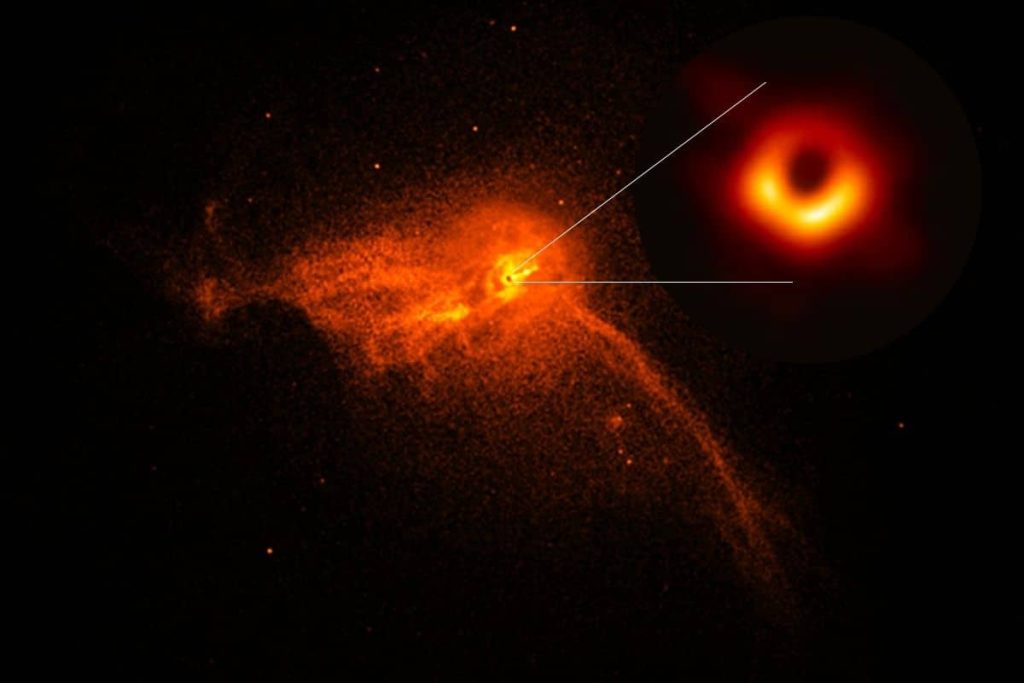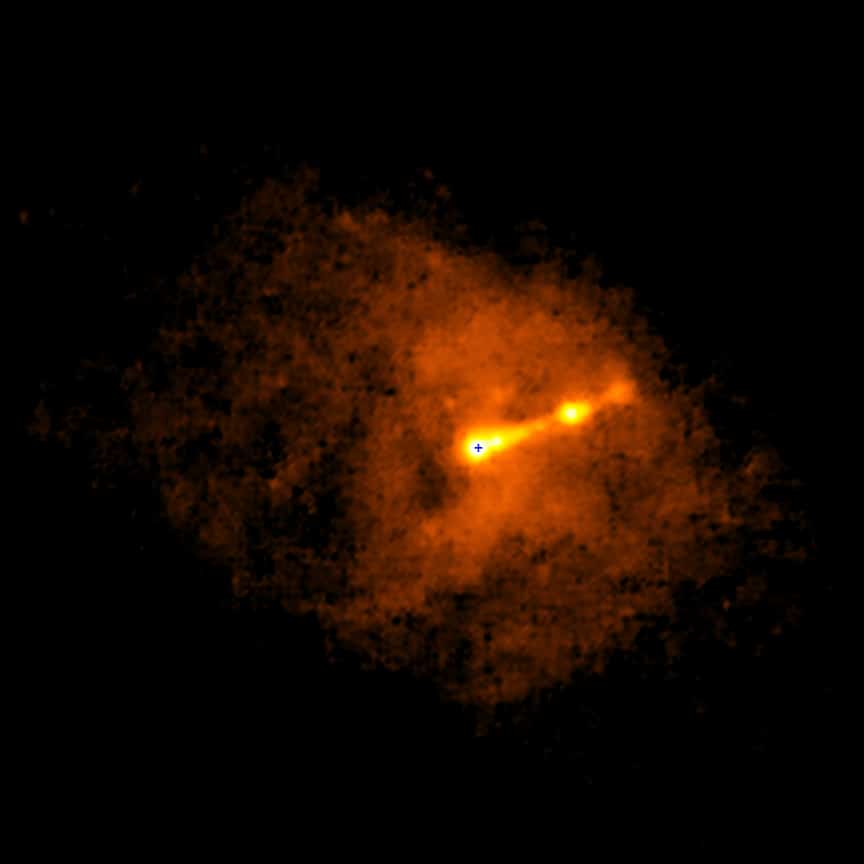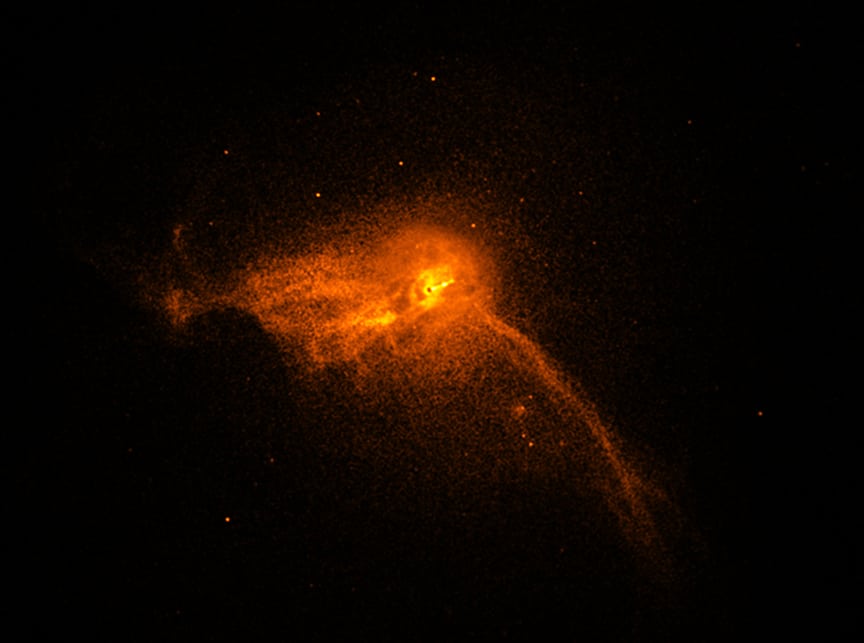In 2019, the first image of a black hole was shared with the world. This image becomes more impressive when zoomed out further.
Last week, researchers unveiled the first-ever image of Sagittarius A, the black hole at the center of our Milky Way galaxy. However, this was not the first shot of a black hole. That honor went to this image of the black hole of the galaxy M87 in 2019. The image was taken by a global network of radio telescopes, the Event Horizon Telescope Project.
While radio telescopes on Earth worked together to create a fascinating image of M87’s supermassive black hole, the Chandra X-ray Telescope captured images near M87. The result of this is the space picture of the week.
Let’s start with the well-known picture of a black hole…
Then we zoom out. The Chandra X-ray Observatory is unable to see the shadow of the black hole, but many other details surrounding the black hole are visible. For example, we see a mixture of magnetic fields and gravitational fields around the singularity. On the right is a powerful gas stream spanning more than a thousand light-years. Astronomers call such a gaseous flow a jet.
Zooming out a bit, we see the vicinity of the M87. This image is perhaps just as important as the detailed image from the Event Horizon Telescope. Imagine a trumpeter in a concert hall. Thanks to the EHT, astronomers get a close-up view of the trumpet mouthpiece. Thanks to Chandra, researchers can see sound waves coming from the horn and can check for echoes in space. Both pictures are important for putting the puzzle pieces together. As a result, astronomers better understand how black holes work and how they affect their environment.
Galaxy M87 is located 60 million light-years from Earth. The galaxy is located at the center of the Virgo cluster, a group of galaxies fifty million light-years from Earth. M87 doesn’t have gorgeous spiral arms, like our Milky Way galaxy, but a giant ball of stars. When you put all the stars, black holes, and nebulae in this galaxy on a scale, the total weight is comparable to 2 to 3 trillion suns combined. By comparison, our Milky Way galaxy weighs only 700 billion suns. Messier 87 is famous for its many ball clusters. Our Milky Way has 150 globular clusters, but M87 has 4,000 to 15,000!
Astronomers believe that giant galaxies like M87 are constantly swallowing smaller galaxies, making them even larger. However, it is difficult to prove this. Just pour a glass of water into the North Sea. Can you still find that glass of water after an hour? Probably not, because the water mixes with sea water very quickly. This also applies to dwarf galaxies merging into larger galaxies.

“Total coffee specialist. Hardcore reader. Incurable music scholar. Web guru. Freelance troublemaker. Problem solver. Travel trailblazer.”








More Stories
“There is no scientific evidence for strict fertilizer standards in the Netherlands.”
Astronomers have discovered a new molecule in space. And it's very special
Will it soon be possible to freeze humans and then thaw them again?